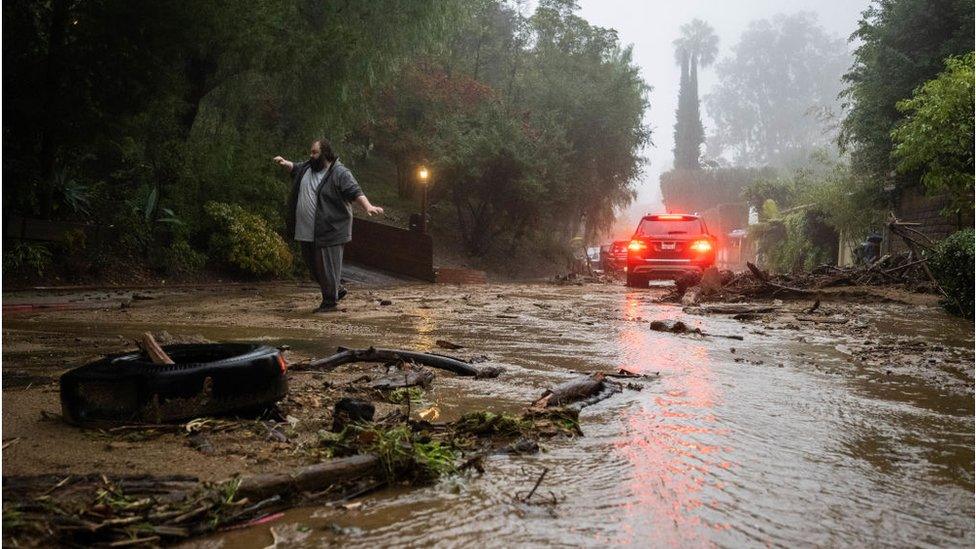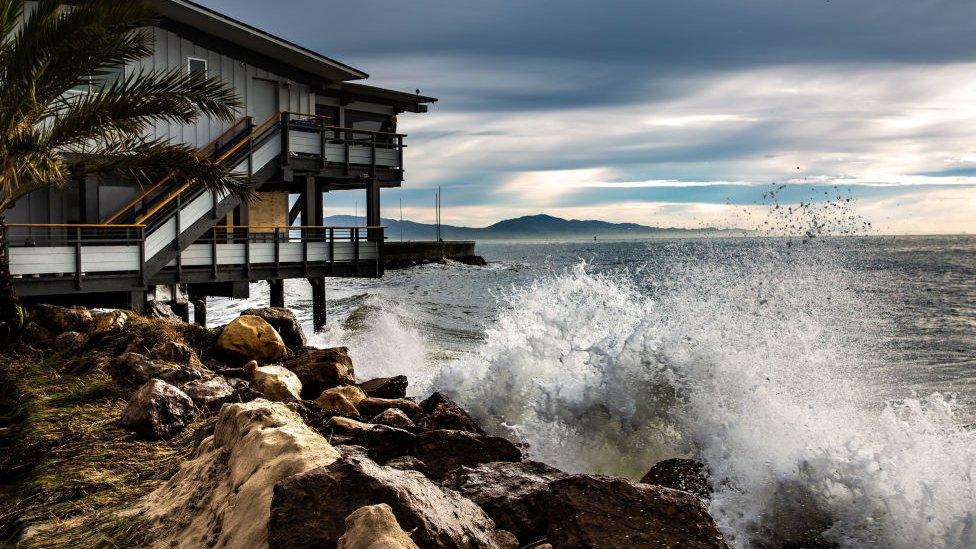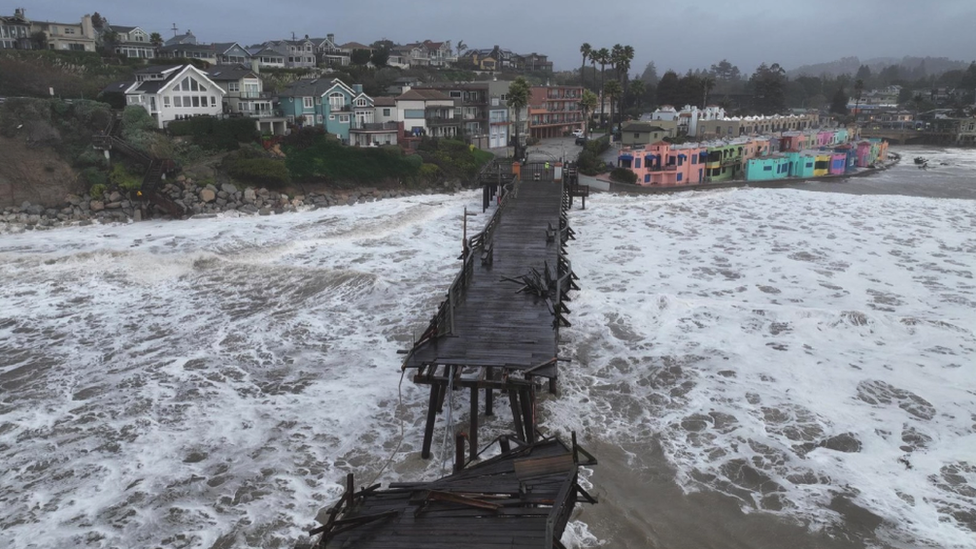Why Montecito faces such high risk from mudslides
- Published

In 2018, Montecito saw a similar catastrophe - 23 people were killed.
The exclusive town of Montecito, California was ordered to evacuate on Monday amid fears of mudslides.
The coastal town is home to the Duke and Duchess of Sussex, Oprah, Ellen DeGeneres and other celebrities.
Five years ago yesterday, the town was hit by a another storm that caused massive mudslides, killing 23 people and destroying over 100 homes.
So far 16 people have been killed in the storm now gripping southern California.
The US National Weather Service (NWS) reported that up to 14in (35.5cm) of rain was dumped in the last 24 hours in Santa Barbara, the region where Montecito is situated.
Montecito's location between the Pacific Ocean and the Santa Ynez Mountains is among the reasons why the upscale town faces greater risks in natural disasters, including floods and mudslides, according to experts.
The BBC spoke to Larry Gurrola, an engineering geologist who focuses on the Santa Barbara region.
What makes the region dangerous is the steep topography of the mountains to the east and two types of rock that make up the mountain, he said.
The Santa Ynez Mountains rise up to 4,864ft (1482m) above sea level and comprise shale and sandstone - both of which are easily erodible.
Mr Gurrola noted that "sudden increase in elevation causes more precipitation at higher elevation". And that precipitation runs down into the town.
"There could be two inches of rainfall in community, but in the mountains it could total 6 inches and drain into the town," Mr Gurrola said.
"Since 1825, there'd been 56 damaging flood events in southern Santa Barbara county," he added.
Climate is another factor when it comes to the potential to trigger mudslides in particular. California has been experiencing a drought for the past few years, leaving the land dry and loose. Similarly, when wildfires tear through the area, it can burn vegetation that would typically allow for some absorption of intense rain.
Post-fire conditions can add to the potential severity of mudslides by significantly increasing "runoff velocity" - the speed at which debris and precipitation flows down the side of a mountain, according to Mr Gurrola.
After a fire, debris can flow 50 times faster than before the fire.
The region, which has been through wildfires and mudslides, is considered such high risk for insurance companies that the state of California has had to step in with its own insurance plan - FAIR - to provide "basic fire insurance coverage for high-risk properties when traditional insurance companies will not".
Back in the deadly 2018 mudslides, the Thomas Fire had just ripped through the town.
At the time, it was the second deadliest fire in the state. Then intense rain followed and loosened the burned-scarred and stripped land from the mountains.
Although the most recent fire burned through Santa Barbara county in 2021, Mr Gurrola noted that the after-effects can be felt by a community for three to five years.
The anniversary of those deadly 2018 mudslides is not a far off memory for many in the Montecito. Officials are hoping this evacuation will avoid further life loss.
Related topics
- Published10 January 2023

- Published13 March 2023

- Published6 January 2023
